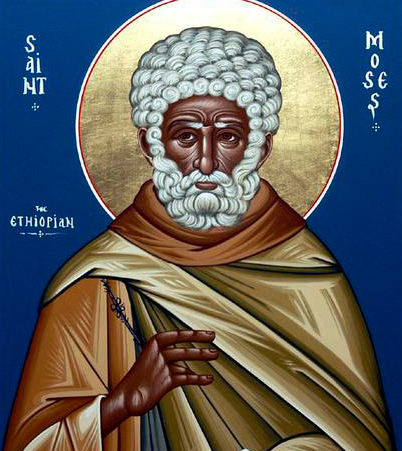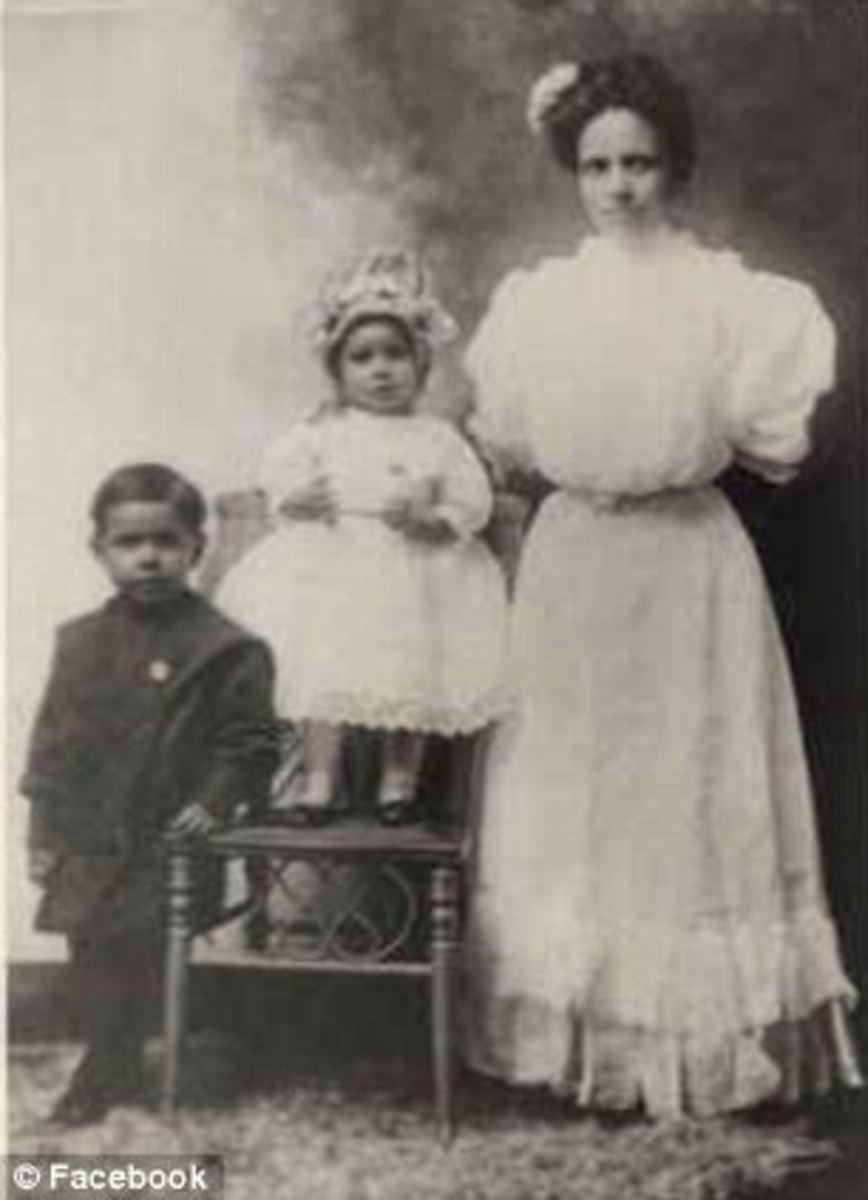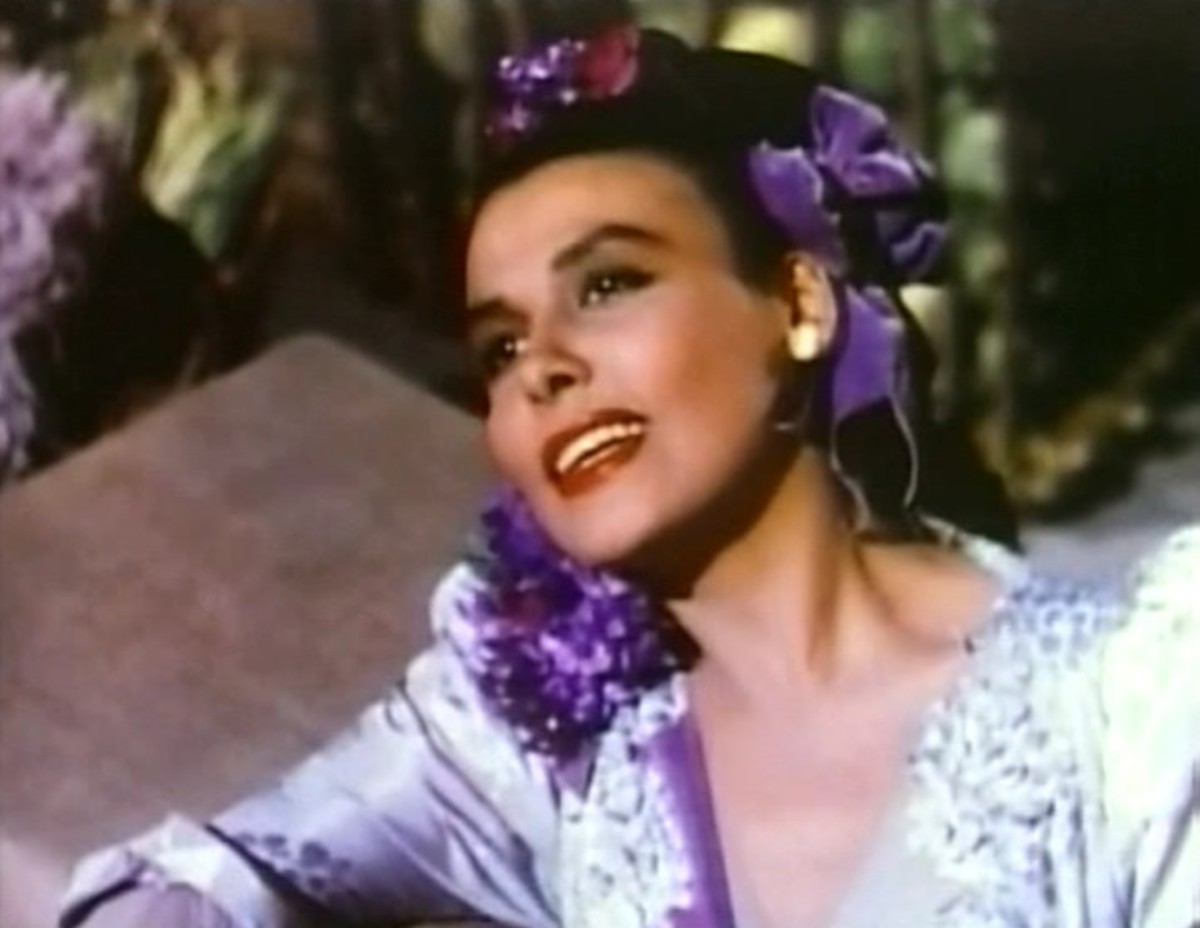Black in the Soul: A Look At Racial Belief in Early Christianity

In structuring any delineated group, either on social or religious terms, boundaries and definitions must be set. Thus, a group is adequately defined. Often times, when defining specific social groups, race and ethnicity (in being a major human variation) play a key role. As such, racial boundaries can be construed as racist if certain stereotypes are put in place. In the pre-Christian Greco-Roman world, such distinctions, construed as “racist,” can be found. However, there existed no ultimate and coherent racist patterns in the Greco-Roman culture. This disjointed racism, mainly towards blacks of Ethiopian descent, was ultimately appropriated to Christian belief. But, unlike the incoherent racism of the Greco-Roman, discrimination in early Christianity was deepened when applied to the beliefs of the physical body, as well as the soul. Thus, Christianity, in defining itself in its early stages, appropriated shallow and incoherent racist ideas of Greco-Roman culture, gave these ideas structure, patterns, and a new dynamic in terms of the metaphysics of the soul. Early Christianity can thus be construed as far more coherently racist than Greek and Roman culture.
To begin, in looking at a time period before modern ideas or race were constructed (i.e. eugenics, biology, etc.), one must adequately use the correct lens in terms of defining racism. Surely delineating various groups based on color is not necessarily a racist practice. However, when social structures assign “‘inferior and unalterable roles and rights’ to a specific group”[i], racism is defined, regardless of historical time period and cultural beliefs. Using this model of racism at its most basic form, a correct analysis of race in a distant time period can thus be constructed.
With the crystallization of Christianity as a major religion in the 4th century, there came about many various beliefs surrounding the structure and ideology of Christian theology. In being a religion founded adjacent to Greco-Roman pagan contexts, it is no surprise that many Greek and/or Roman ideals are found within Christianity. One such shared ideal is the belief of color symbology. As a conquering state, Rome was faced with various cultures, races, and ethnicities, and had to construct various meanings surrounding such races. “…Greco-Roman writers were aware of the otherness of these ethnic groups and geographic locations, and likewise associated the color black and blackness with evil and demonic activities.” [ii] Many Greco-Roman writers therefore chose to venerate feelings towards Ethiopians in this manner. Gay L. Byron, a professor of race in antiquity proclaims, “The association of whiteness and blackness with moral attributes became a common rhetorical strategy throughout many types of ancient writings.”[iii] As Byron adds, “Cicero calls Ethiopians stupid and Juvenal expresses contempt for them through color-symbolic language.”[iv] As one can see, much of the color symbology, and ignorant grammar (i.e. “stupid”) shows that racism in the Greco-Roman period was shallow in nature, and often had no deeply rooted meaning other than superficial. Combined with the fact that many times Ethiopians were held high by the Gods of Hellenism and spoken in high regard by many other authors,[v] it is clear that racism was unstructured, incoherent, and had no overall explanation or meaning.
As stated above, early Christian writers, especially authors of Greek influence, many times borrowed from Greek and Roman culture in constructing Christianity. According to Byron, “Christian authors did not create their exegetical interpretations and theological treatises in a cultural vacuum,” but were heavily influenced by the “literature of Greco-Roman authors.”[vi] The borrowing of cultural ideologies itself is also not a new action of Christianity. As the Jewish philosophers Philo (20 BCE – 50 CE) and Josephus (37 –ca. 97 CE) attested, “elite Jewish authors adopted the Greco-Roman tendency of displaying negative attitudes against Egyptians.”[vii] This cultural re-appropriation, however, especially in the case of Christian authors, was not without revision and alteration. This ultimately created cultural modes and ideas based on Greco-Roman ideology, but “adjusted to the discourses”[viii] of Christian belief. Thus, as one will see, the socially constructed racial beliefs of Greece and Rome were altered to fit a more spiritual model of Christianity, in which color symbology was positioned onto both the physical human body, and the soul.
To begin such an analysis on obviously a very large and extenuating topic, a focus must be defined. In terms of this argument, it seems only appropriate to concentrate on the historical area of early desert monasticism in the mid-to-late 4th century, in order to draw examples for two primary reasons. First, life in the desert, mainly in the regions of Northern Africa, allowed for the interaction between many ethnic groups, namely Ethiopians and darker-skinned Egyptians. Secondly, life in the desert was often seen as a test; a test of the soul, the human body, and the mind. As such, various ways to test the mind, body, and spirit often times come about through racial forms. Hence, ideals and beliefs of early Christianity in regards to race can be extracted from these various tests. Thus, early desert monasticism seems wholly appropriate as a concentration of this article’s topic.
One of the more paramount instances of Christian writing involving racial interactions on both a physical and spiritual level is Athanasius’ Life of Antony. Written sometime after Antony’s death in 376 A.D.[ix], the Life of Antony depicts one of the early forms of a Christian desert worshipper, seeking a life of prayer and adoration by means of simplicity and solitude in the desert. Early in the Life of Antony, Athanasius introduces readers to the title character, an Egyptian child, who unlike other children at his age, wholeheartedly follows the word of God. Upon hearing several sermons in his local church regarding the relinquishing of earthly desires, Antony hastily sells all of his possessions and gives the money he has to the poor.[x] Antony eventually settles himself in the desert in order to practice a pious and virtuous life. But, in doing so, Antony becomes the subject of the throws of the Devil, who “…tried to awaken in him [Antony] a desire for material things or for the fleeting honours of the world, for the pleasures of different kinds of food and all other attractions which belong to a life of indulgence.[xi]
After several fleeting attempts by the Devil to push Antony away from the grace of God, the Devil eventually accepts defeat. “So gnashing his teeth and wailing, he [the Devil] appeared, as was fitting, in a form that revealed his true nature: an ugly black boy prostrated himself at Antony’s feet…”[xii] Ultimately, Antony’s response to the Devil here is key: "You are utterly despicable and contemptible, for both your blackness and your age are signs of weaknesses."[xiii] It is here where readers, by glimpsing at the Devil’s true form according to Athanasius, and reading of Antony’s response, ultimately receive a glimpse of what the black race represents to early Christians. In physical terms, the blackness of the young boy’s skin represents evil or sin. In this, ideas of color symbology from Greco-Roman beliefs are brought into fruition as Christian ideals. More importantly, however, Athanasius presents readers with a physical means to measure Christianity’s boundaries. The black race represents sin and wrong doing – structured racist ideals. This, however, is only one side of this Christian belief.
Further into the Life of Antony, Athanasius ultimately reveals early Christianity’s take on blackness in terms of spirituality. “You are black in your soul,” Antony proclaims to the Devil upon his defeat.[xiv] Thus, while the blackness of the boy’s skin represents earthly and physical sin, the color of the boy’s inner being represents spiritual sin.[xv] Hence, while most racial debates center on socially constructed ideals, the ideals held by early Christian followers represent Greco-Roman social constructs placed on religious beliefs of the soul.
Another prominent instance of early Christian race belief can be found in the story of Abba Moses. Born an Ethiopian of black skin in 330 A.D., Abba Moses became one of the more prominent desert fathers, especially after his martyrdom in 405 A.D.[xvi] The portion of this story surrounding Abba Moses’ early life, both in content and rhetoric, is key to understanding Christian concepts of blackness and the soul. “…he [Abba Moses] was likewise dark in soul before he came to know Christ, being of an alien race and a person of ill repute.”[xvii] Thus, not only is the idea explicitly stated that there exists a belief in the concept of a blackening of the soul, but, an un-pious life of “ill repute” is linked rhetorically to the color black – both physically and spiritually.
Further into the story, once Abba Moses had renounced his wayward life and has been baptized a Christian, he becomes a desert monk. Upon learning of Abba Moses’ great piety, the surrounding monks of Scete wished to adorn Abba Moses with priesthood. On the day of his adorning, a fellow priest said to Abba Moses, “‘Abba Moses, now you are completely white!’ Meekly and with all due respect, he [Abba Moses] answered: ‘Father of fathers, which is completely white, the interior or the exterior?’”[xviii] The answer to this question is found further in the story of Abba Moses, as he is described as “Black according to the flesh, but pure white of soul.”[xix] Thus, it is apparent that there were clearly defined categories representing the blackness of one’s skin and the blackness of one’s soul in relation to sin.
Abba Moses, one can say, is perhaps even praised by his fellow priests for the fact that his body was black, but his soul was of “white color.” Abba Moses may have been found ample in that his soul, now white, overcame his black body (the body being a source of sin according to Christian belief). This idea will have yet further implications in the following argument. Furthermore, unlike the incoherent racial attitudes of Greco-Romans, these Christian ideals are extremely defined and coherent, and deep with meaning.
Surprisingly, however, many authors seem to have the belief that like Greco-Roman beliefs, Christian dealings with race were incoherent and shallow. While it has been established that Greco-Roman racial attitudes were often disjointed and even conflicting, many modern day authors point to a portion of the New Testament to show that Christianity was also incoherent in its racial patterns.[xx] This portion is Acts 8:26 of The New Testament, in which Luke depicts an Ethiopian eunuch “as a model of ancient Christian virtue.” Like many authors, Byron claims that, “Luke uses this figure, who would have been considered ‘other’ or ‘foreign’ to his audience, to demonstrate that Christianity could break through cultural and ethnic differences.”[xxi] In order to adequately debunk Byron’s claim to show that Christianity did indeed have coherent racial beliefs, Athanasius’ The Life of Antony must again be revisited.
In The Life of Antony, just prior to the Devil’s defeat at the hands of Antony, the Devil “would turn himself into the attractive form of a beautiful woman, omitting no detail that might provoke lascivious thoughts…”[xxii] After the Devil revealed himself in true form as a small black boy, Antony inquired as to the boy’s name, to which the boy replied “I am the friend of fornication.”[xxiii] Thus, the blackness of one’s soul and skin is linked to the Christian sin of fornication. Often times, in the writings of desert monasticism, the test of the soul often came about through the temptation of the body. According to Byron, “The sexual danger that Ethiopians presented to the desert fathers is well attested in the monastic literature from the fourth through sixth centuries CE.”[xxiv] A new and widely held belief of the desert monastics in this time period was the idea of original sin, in which Adam and Eve’s fall from grace was subsequently passed to all man through fornication. Thus, in many instances, fornication was seen as the ultimate sin.[xxv] Hence, not only was blackness of the soul and the body linked to the sin of fornication, but also perhaps blackness was linked to the ultimate sin.
While Byron uses Luke’s humble depiction of the Ethiopian eunuch in Acts 8:26 to argue that Christianity was not coherently racist, such an example seems to offer quite the opposite view when relating blackness to the sin of fornication. In being a eunuch, this Ethiopian has literally and figuratively severed his ability to commit fornication, perhaps the defining stereotype of Ethiopians to Christians. As such, this Ethiopian’s skin remains black, yet his soul has now relinquished its ability to commit the ultimate bodily sin, and to Christians, his soul was perhaps seen as pious, or “white.”
In this way, this eunuch is no different from Abba Moses. Both of these figures have overcome the “blackness” of their souls, as determined by their skin color. As such, they are seen as virtuous, and both held high by their respective Christian authors. So, while Byron uses the eunuch in Acts 8:26 to show that God’s salvation is available to all regardless of race, it seems more appropriate to interpret this figure as a respectable and pious Ethiopian under certain conditions. In this way, salvation is available to all, under conditions. These conditions, as the story of the eunuch depicts, are racially centered conditions. Thus, one can conclude that Christianity is indeed coherently racist.
Many authors conclude that while early Christians defined themselves through the defining of others, this was simple classification, not race. “…early Christian texts used culturally available understandings of human difference, which we can analyze in terms of our modern concepts of ‘ethnicity,’ ‘race,’ and ‘religion,’ to shape what he have come to call a religious tradition…” proclaims Denise Buell in her historical study, Why this New Race?[xxvi]
Certainly, it is true that Christians used already accepted ideas of human difference, mainly originating from Greco-Roman concepts. But, Buell goes on to agree with leading historiographer of race in antiquity, Frank Snowden. “Christianity swept racial distinctions aside.”[xxvii] In his novel, Before Color Prejudice, Snowden states that Christianity possessed the “…most noteworthy aspect of the attitude toward color in antiquity: the ability of the ancients to see and comment on the obviously different physical characteristics of people without equating inferiority or superiority with skin color.”[xxviii] But is this truly the case?
While it is true that early Christians neither physically nor outright proclaimed themselves to be superior to ethnic others through texts or violent means, (this point must be conceded), nevertheless, as one can see, certain roles and meanings were placed upon these groups, especially in spiritual terms. In the case of Antony, blackness of the skin and the soul are both linked to the sin of fornication. In the story of Abba Moses, black skin color is initially linked to a life of “ill repute.” And in the case of Luke’s eunuch, racial stereotypes can be seen, albeit removed, in accordance with the removal of the ability to commit fornication.
Thus, racism, under the definition of socially constructed assignments of “inferior and unalterable roles and rights” to a specific group, were present in early Christianity.
Ultimately, the key to understanding the coherence of racial attitudes in early Christian society is identifying the main purpose and meaning of these outlooks. As a vast empire, Rome often encountered various ethnic groups. While there exists mixed interpretations of these groups, which can be perceived as racist, most Greco-Roman literature surrounding race was based on scientific and taxonomic study. “Greco-Roman authors were consumed with describing the unique physical attributes of Egyptians, Ethiopians, and Blacks. In most cases the physical descriptions were not intended to communicate any negative regard for these ethnic groups.”[xxix] As such, Greco-Roman culture was not practicing unified racism, but racialism.
According to anthropologist Carolyn Fluehr-Lobban, racialism “describes, distinguishes, and classifies racial or phenotypic difference among humans. [It] includes scientific and ideological approaches that take notice and account of race.”[xxx] Christianity, however, employs racism, “which not only takes account of racial difference, but evaluates that difference, ranking it into superior or inferior, higher or lower types.”[xxxi] Thus, the ultimate reasoning for the deepening of racial attitudes in Christianity was definition. Rome and the dominated Greece saw their empire as a conquering force. Thus, the realization existed in Greco-Roman culture that the Empire accepted various ethnic and racial groups within its geographical boundaries. Christianity, however, in defining itself from Rome and Greece, had to alter certain ideas in order to set boundary acceptance. Ethnic blacks could be accepted under Christianity and could receive salvation, but they ultimately had to overcome the “race” and “color” of their soul. Hence, Christianity was defined by the color of the soul, which was in turn defined by skin color - both racist ideologies.
In the end, there exists ample evidence to show that both Greco-Roman culture and Christianity were racist. The overall coherence of the racism of these two groups diverges when Christianity, in defining itself, gave new dynamic and a deeper meaning to this racism. By fixing race and color symbology to the soul, Christianity was giving racism a deeper meaning. As The Story of Abba Moses exhibits, Christianity does indeed exhibit both physical and spiritual forms of racism, however, the “race” of the soul is most paramount in regards to Christian beliefs of salvation. As the story of the Ethiopian eunuch shows, ethnic blacks were stereotyped as having black and wicked souls. By destroying this link between black skin and the black soul, as the eunuch did physically and Abba Moses did spiritually through virtue, blacks can be accepted into early Christianity.
Ultimately, the resounding fact that stereotypes based on race were placed upon ethnic blacks by early Christian authors remains. If Christianity truly “swept racial distinctions aside,”[xxxii] as Frank Snowden claims, why do negative racial connotations exist in Christian texts, especially in the cases of The Life of Antony and The Story of Abba Moses? The true answer is that Christianity did not simply set racial distinctions aside, but put racial distinctions into action more so than Greek and Roman culture previously had. Racism was a fundamental part of Christian belief, and a means to measure the religion’s membership policy, both physically and spiritually. Christianity, hence, was defined as a religion founded on the status and virtue of the soul, a status often calculated by the physical body. Thus, racism ultimately was present in early Christianity, and ultimately, more coherent and existing with deeper meaning.
Matthew Gordon is the author of The Thin Blue Line: An In-Depth Look at the Policing Practices of the Los Angeles Police Department &
To Live, To Think, To Hope - Inspirational Quotes by Helen Keller.
© Matthew Gordon, 2011
Other Works by the Author
Notes
[i] David M. Goldenberg, The Curse of Ham, (Princeton: Princeton University Press, 2005), 9.
[ii] Gay L. Byron, Symbolic Blackness and Ethnic Difference in Early Christian Literature, (London: Routledge, 2002), 51.
[iii] Byron, 37.
[iv] Byron, 32.
[v] Byron, 32.
[vi] Byron, 29.
[vii] Byron, 35.
[viii] Byron, 41.
[ix] Athanasius, Life of Antony, Early Christian Lives, ed. Carolinne White, (London, England: Penguin Group, 1998), 3.
[x] Athanasius, 9.
[xi] Athanasius, 11.
[xii] Athanasius, 12.
[xiii] Athanasisus, 13.
[xiv] Byron, 88.
[xv] Byron 88.
[xvi] The Life of Abba Moses.
[xvii] The Life of Abba Moses.
[xviii] The Life of Abba Moses.
[xix] The Life of Abba Moses.
[xx] Byron, 45.
[xxi] Byron, 45.
[xxii] Athanasius, 12.
[xxiii] Athanasius, 12.
[xxiv] Byron 46.
[xxv] William E. Mann, Augustine on evil and original sin, The Cambridge Companion to Augustine, ed. Eleonore Stump and Norman Kretzmann, (Cambridge: Cambridge University Press, 2001), 47.
[xxvi] Denise Kimber Buell, Why this New Race, (New York: Columbia University Press, 2005.), 2.
[xxvii] Buell, 1.
[xxviii] Frank M. Snowden, Jr., Before Color Prejudice: The Ancient View of Blacks, (Boston: Harvard University Press, 1991), 151.
[xxix] Byron, 39.
[xxx] Carolyn Fluehr-Lobban, Race and Racism: An Introduction, (Lanham: AltaMira Press, 2005), 2.
[xxxi] Fluehr-Lobban, 4.
[xxxii] Buell, 1.









